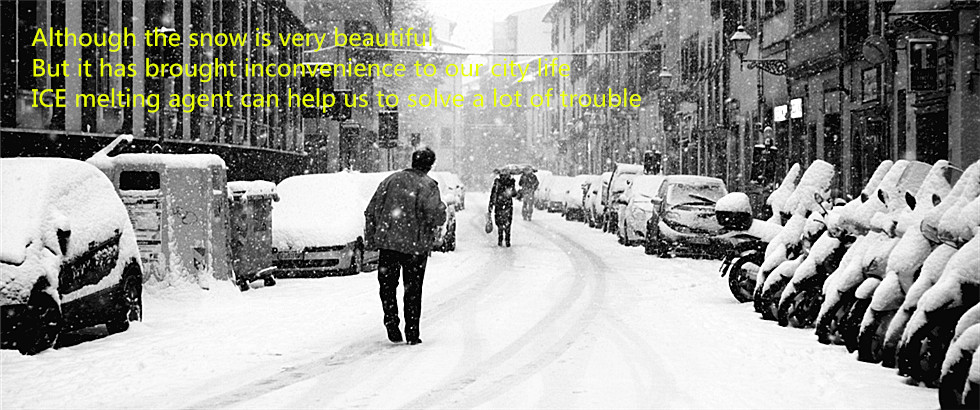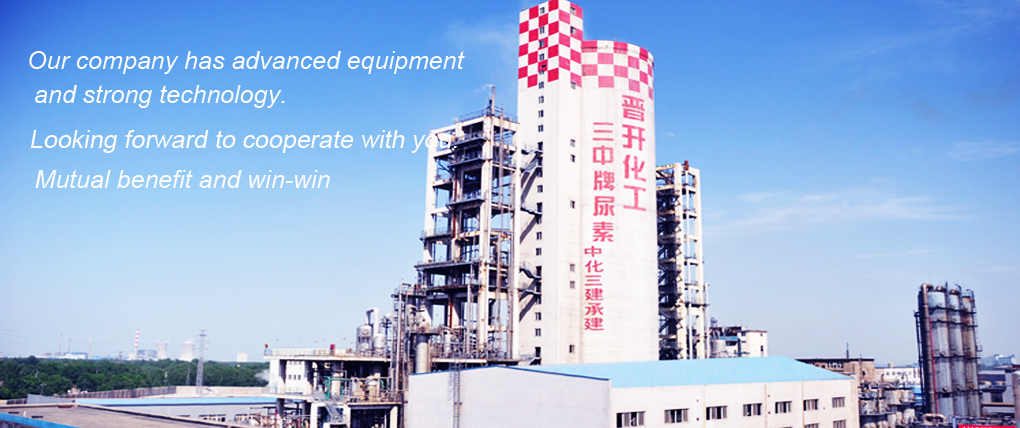Ammonium bicarbonate is a colorless or light-colored compound as a granular, plate-like or columnar crystals. Because ammonium bicarbonate is a carbonate, it must not be placed together and acid, because acid can react to produce carbon dioxide and ammonium bicarbonate, ammonium bicarbonate so bad. But there are also rural energy use ammonium bicarbonate and acid reaction of this nature, the ammonium bicarbonate placed in vegetable greenhouses, will shed sealed and placed in high bicarbonate, dilute hydrochloric acid. At this time, the reaction will be hydrochloric acid, ammonium bicarbonate to produce ammonium chloride, water and carbon dioxide. Carbon dioxide can promote plant photosynthesis, increase vegetable production, and the resulting ammonium chloride can be used as fertilizer use again. In the chemical formula of ammonium bicarbonate, ammonium ion, an ammonium salt, and alkali and ammonium salts can not be placed one for so avoid bicarbonate or calcium hydroxide and sodium hydroxide together.
The main application of ammonium bicarbonate in what field?
1, used as fertilizer, for a variety of soils, ammonium nitrogen and carbon dioxide can provide the necessary crop growth while, but low nitrogen content, easy caking;
2, reagents for the analysis, but also for the synthesis of ammonium and fabric skimmed;
3, can promote plant growth and photosynthesis, reminders seedling leaves, can be used as fertilizer, but also for base fertilizer applied directly, as food bulking agent;
4, advanced fermentation agent for food. Combined with sodium bicarbonate can be used for raw bread, biscuits, pancakes and other leavening agent, also used as a foaming powder juice raw materials. Also used in green vegetables, bamboo shoots blanching, as well as pharmaceutical and reagents;
5, used as buffers; inflatable agent.
6, ammonium bicarbonate in the plastics and rubber industry, pottery making, chrome-tanned leather and synthetic catalysts are widely used.
7, ammonium bicarbonate which has a quick, inexpensive, economical, not compacted soil, for a variety of crops and all kinds of soil, both as basal, but also for dressing, etc., welcomed by farmers. The annual amount of nitrogen fertilizer accounts for about a quarter of total output, is the most widely used in addition to urea as a nitrogen fertilizer products. The main disadvantage of ammonium bicarbonate is volatile, low utilization of nitrogen. Therefore, in the production should be done weaknesses, rational application.
8, applied to deep overburden. Whether ammonium bicarbonate as basal or top dressing, there must be deep application and avoid the soil surface applicator to prevent volatilization of nitrogen, resulting in nitrogen loss. According to the test results show that ammonium bicarbonate deep application can improve the utilization of 31.2% -32%, which is not less than urea fertilizer utilization and ammonium sulfate.
9, should avoid high temperature application. Temperature is below 20 ℃ bicarbonate relatively stable, higher temperature or moisture product exceeds a certain standard, then easily decomposed into ammonia and carbon dioxide gas to escape in the air, resulting in the loss of nitrogen fertilizer. According to the test results show that the application of ammonium bicarbonate winter crop better than urea. Because of low winter temperatures, urea conversion process for a long time, but you do not need conversion facilities ammonium bicarbonate can be absorbed directly conducive Early winter crops long fast. In addition, ammonium bicarbonate applied to the soil after dissociation of ammonium ions can be directly adsorbed soil colloids, and urea applied to the soil after winter crops, urea was dissolved in the soil solution in the molecular state, which can not be adsorbed soil colloids, it is easier to losses fields as a nutrient.
10, should be administered in combination farming. When ammonium bicarbonate as basal fertilizer, arable land should be combined with deep application may furrow or fertilizing, applying a depth greater than 6 cm, was applied to the casing, and immediately after, in order to reduce the loss of nitrogen. When ammonium bicarbonate for fertilizer, dry land can be combined cultivator deep application, and then cover and timely watering, paddy fields to keep the water layer about 3 cm deep, had written in plain root injury, that plowing.
11, pay attention to prevent the occurrence of fertilizer damage. Seed fertilizer ammonium bicarbonate should not be done to prevent the effects of seed germination; prevent the application, roots, stems, leaves contact with the seed, so as not to burn the plants. Such as ammonium bicarbonate for fertilizer, to remember not just the rain before or after the dew is dry applicator.
Ammonium bicarbonate administration should pay attention to the following questions:
(1) can not be
ammonium bicarbonate mixed with alkaline fertilizer application, in order to prevent volatilization of ammonia, resulting in nitrogen loss.
(2) to achieve "five no Shi": that is not mixed with fine soil is not applied, have not applied dew, rain is not applied, no Uchida inch of water is not applied, the sun in the sky is not applied. If time than adequate fertilization, ammonium bicarbonate is best able to make the ball fat or Postheading deep application. In addition, ammonium bicarbonate in the transportation, storage, to light light unloading, packing tightly, stored in a cool dry place, can not be mixed with alkaline fertilizers and human waste, etc., in order to avoid the loss of effective fields as a nutrient.
(3) when administered not with crop seeds, roots, stems, leaves contact, in order to avoid burns plants.
(4) not to do kind of fat, it may affect seed germination.
(5) bogey and fertilizer mix: will release ammonia, ammonium bicarbonate after contact with the fertilizer applied, will make fertilizer in the death of live bacteria, making fertilizer lose effect.
(6) Avoid spraying: easily burn when bicarbonate spraying foliage, photosynthesis plant leaves.
Use Limit:
GB 2760-96: leavening agents need to add all kinds of food, GMP. Milk and dairy products except in accordance with relevant regulations.
FAO / WHO (1984): cocoa powder and cocoa powder, sugar, cocoa bean powder, cocoa liquor, cocoa cake, 5g / kg (total non-fat cocoa, K2CO3 anhydrous basis)
1, used as fertilizer, for a variety of soils, ammonium nitrogen and carbon dioxide can provide the necessary crop growth while, but low nitrogen content, easy caking;
2, reagents for the analysis, but also for the synthesis of ammonium and fabric skimmed;
3, can promote plant growth and photosynthesis, reminders seedling leaves, can be used as fertilizer, but also for base fertilizer applied directly, as food bulking agent;
4, advanced fermentation agent for food. Combined with sodium bicarbonate can be used for raw bread, biscuits, pancakes and other leavening agent, also used as a foaming powder juice raw materials. Also used in green vegetables, bamboo shoots blanching, as well as pharmaceutical and reagents;
5, used as buffers; inflatable agent.
6, ammonium bicarbonate in the plastics and rubber industry, pottery making, chrome-tanned leather and synthetic catalysts are widely used.
7, ammonium bicarbonate which has a quick, inexpensive, economical, not compacted soil, for a variety of crops and all kinds of soil, both as basal, but also for dressing, etc., welcomed by farmers. The annual amount of nitrogen fertilizer accounts for about a quarter of total output, is the most widely used in addition to urea as a nitrogen fertilizer products. The main disadvantage of ammonium bicarbonate is volatile, low utilization of nitrogen. Therefore, in the production should be done weaknesses, rational application.
8, applied to deep overburden. Whether ammonium bicarbonate as basal or top dressing, there must be deep application and avoid the soil surface applicator to prevent volatilization of nitrogen, resulting in nitrogen loss. According to the test results show that ammonium bicarbonate deep application can improve the utilization of 31.2% -32%, which is not less than urea fertilizer utilization and ammonium sulfate.
9, should avoid high temperature application. Temperature is below 20 ℃ bicarbonate relatively stable, higher temperature or moisture product exceeds a certain standard, then easily decomposed into ammonia and carbon dioxide gas to escape in the air, resulting in the loss of nitrogen fertilizer. According to the test results show that the application of ammonium bicarbonate winter crop better than urea. Because of low winter temperatures, urea conversion process for a long time, but you do not need conversion facilities ammonium bicarbonate can be absorbed directly conducive Early winter crops long fast. In addition, ammonium bicarbonate applied to the soil after dissociation of ammonium ions can be directly adsorbed soil colloids, and urea applied to the soil after winter crops, urea was dissolved in the soil solution in the molecular state, which can not be adsorbed soil colloids, it is easier to losses fields as a nutrient.
10, should be administered in combination farming. When ammonium bicarbonate as basal fertilizer, arable land should be combined with deep application may furrow or fertilizing, applying a depth greater than 6 cm, was applied to the casing, and immediately after, in order to reduce the loss of nitrogen. When ammonium bicarbonate for fertilizer, dry land can be combined cultivator deep application, and then cover and timely watering, paddy fields to keep the water layer about 3 cm deep, had written in plain root injury, 施后立 that plowing.
11, pay attention to prevent the occurrence of fertilizer damage. Seed fertilizer ammonium bicarbonate should not be done to prevent the effects of seed germination; prevent the application, roots, stems, leaves contact with the seed, so as not to burn the plants. Such as ammonium bicarbonate for fertilizer, to remember not just the rain before or after the dew is dry applicator.
Ammonium bicarbonate administration should pay attention to the following questions:
(1) can not be ammonium bicarbonate mixed with alkaline fertilizer application, in order to prevent volatilization of ammonia, resulting in nitrogen loss.
(2) to achieve "five no Shi": that is not mixed with fine soil is not applied, have not applied dew, rain is not applied, no Uchida inch of water is not applied, the sun in the sky is not applied. If time than adequate fertilization, ammonium bicarbonate is best able to make the ball fat or Postheading deep application. In addition, ammonium bicarbonate in the transportation, storage, to light light unloading, packing tightly, stored in a cool dry place, can not be mixed with alkaline fertilizers and human waste, etc., in order to avoid the loss of effective fields as a nutrient.
(3) when administered not with crop seeds, roots, stems, leaves contact, in order to avoid burns plants.
(4) not to do kind of fat, it may affect seed germination.
(5) bogey and fertilizer mix: will release ammonia, ammonium bicarbonate after contact with the fertilizer applied, will make fertilizer in the death of live bacteria, making fertilizer lose effect.
(6) Avoid spraying: easily burn when bicarbonate spraying foliage, photosynthesis plant leaves.
Use Limit:
GB 2760-96: leavening agents need to add all kinds of food, GMP. Milk and dairy products except in accordance with relevant regulations.
FAO / WHO (1984): cocoa powder and cocoa powder, sugar, cocoa bean powder, cocoa liquor, cocoa cake, 5g / kg (total non-fat cocoa, K2CO3 anhydrous basis)







247.jpg)


